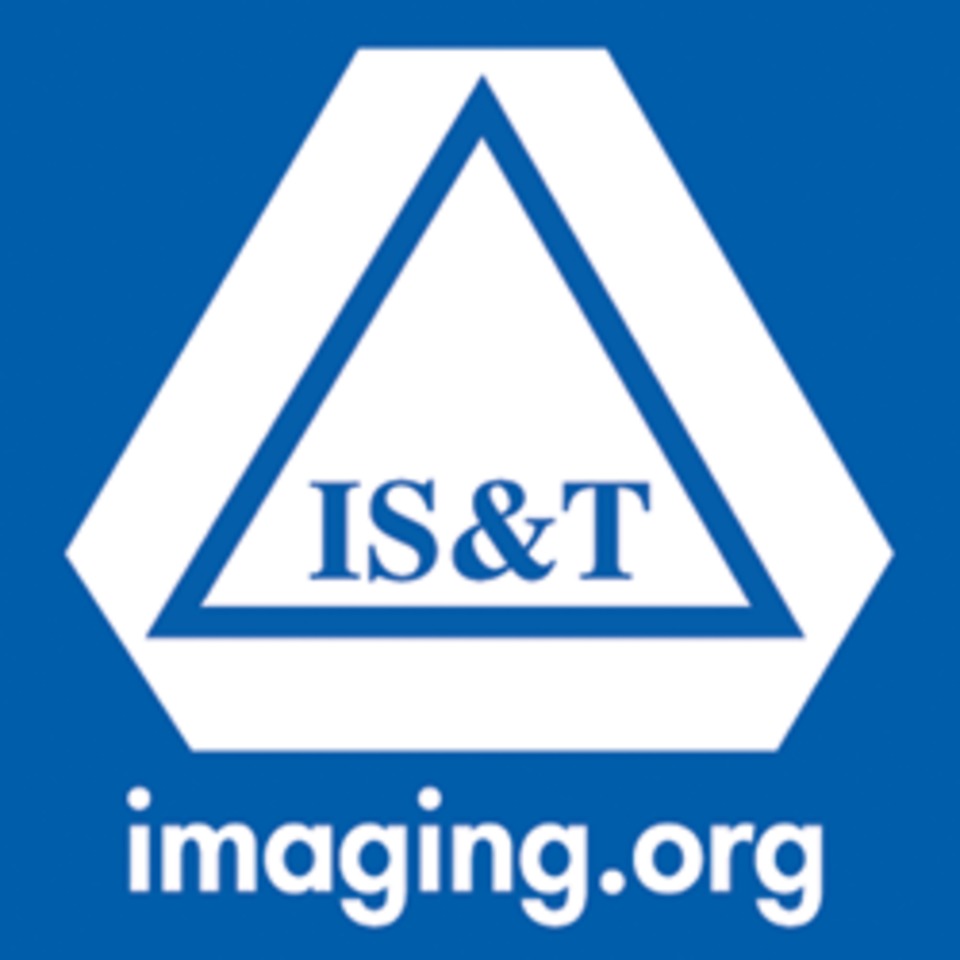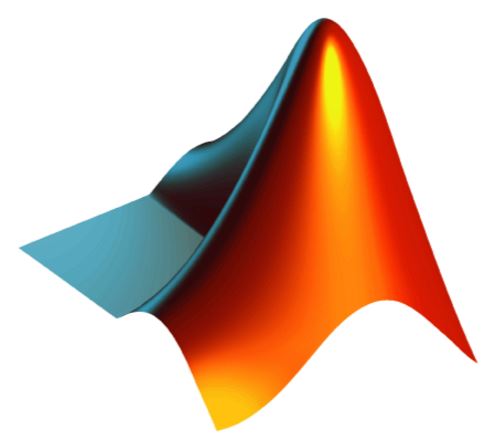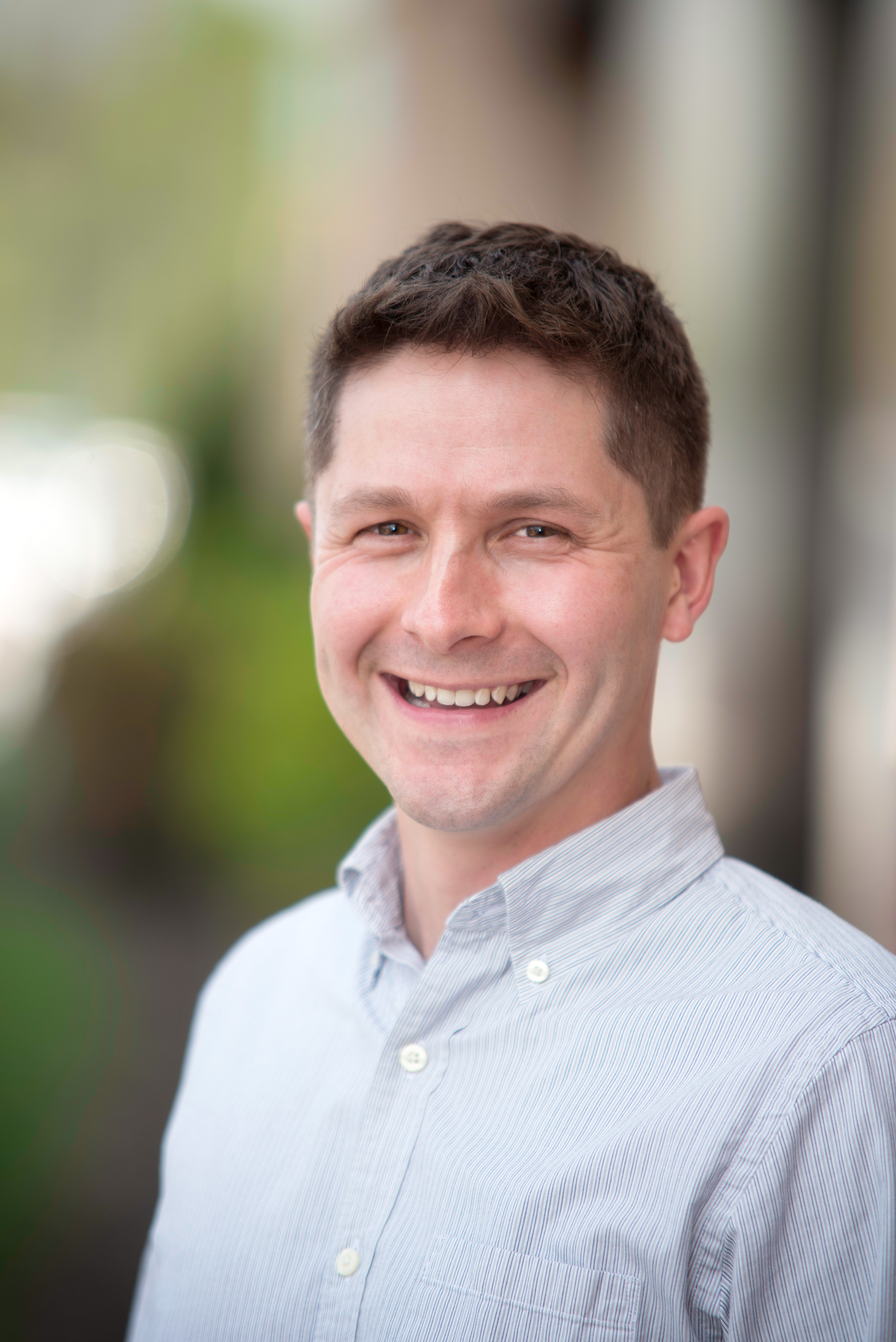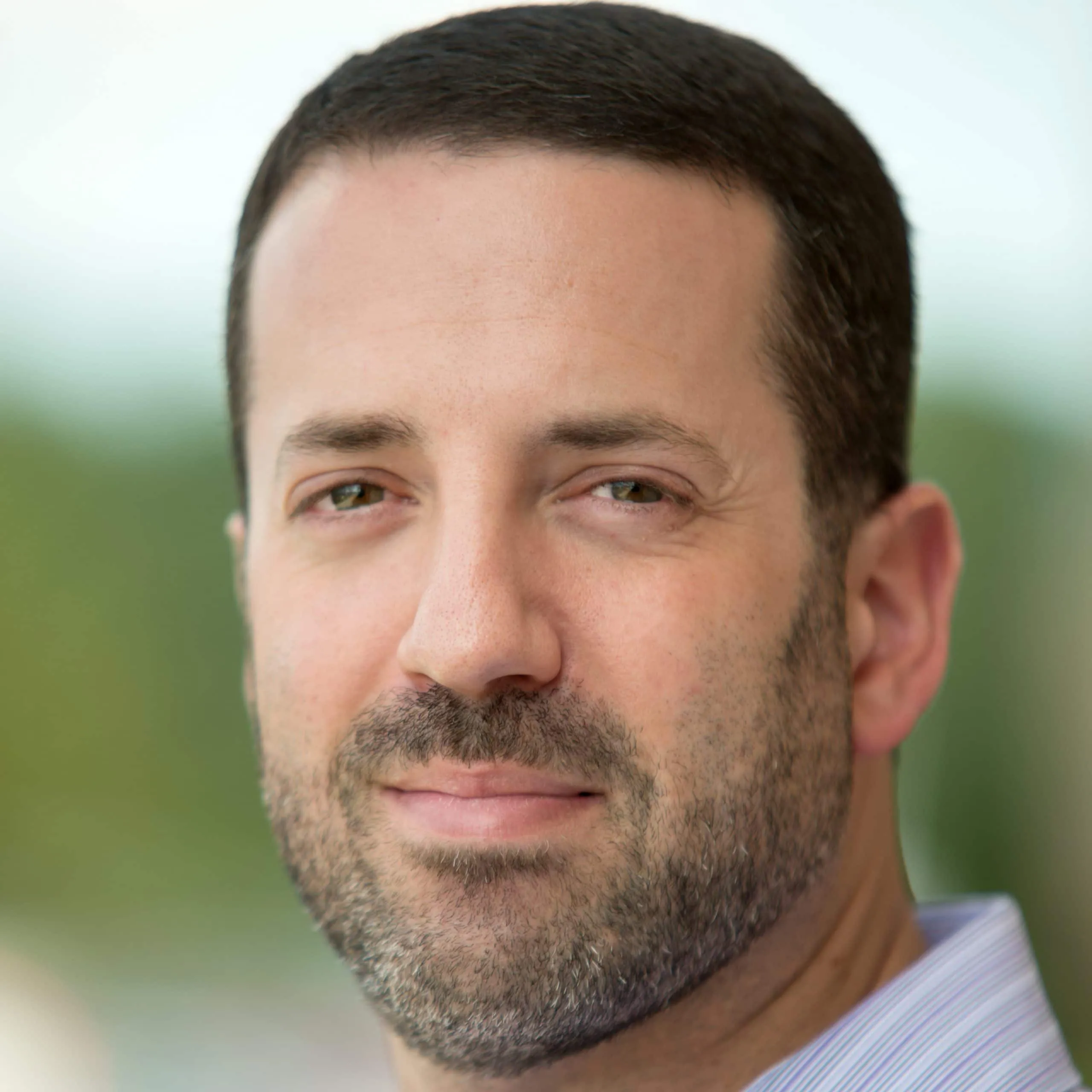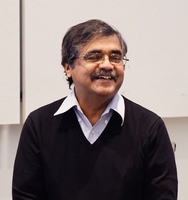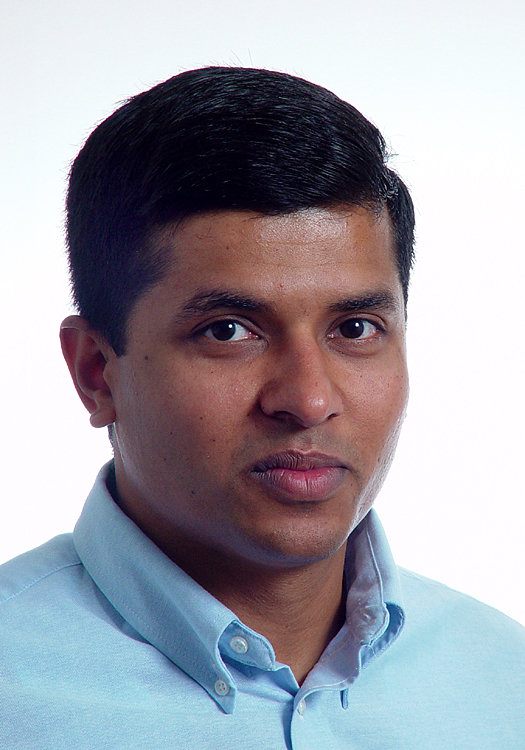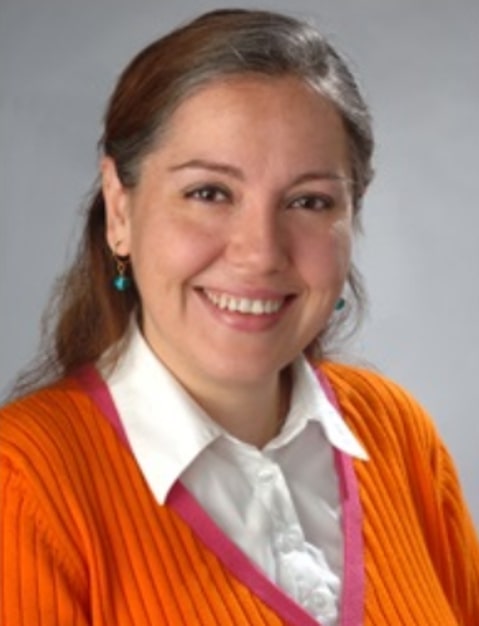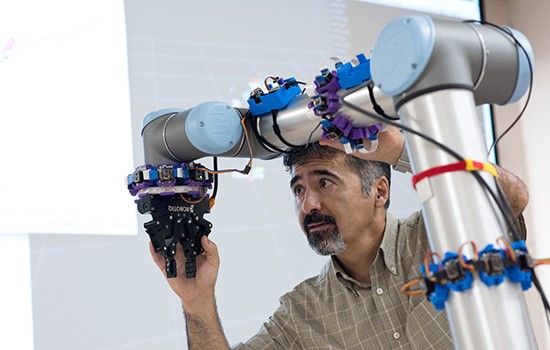2021 WNYISPW -- Brought to you by Orolia
The 2021 Western New York Image and
Signal Processing Workshop (WNYISPW) is a venue for
promoting image and signal processing research in our area
and for facilitating interaction between academic
researchers, industry professionals, and students. The
workshop comprises both oral and poster presentations.
The workshop, building off of 22 successful years of the Western New York Image Processing Workshop (WNYIPW), is brought to you by Orolia, with financial support from SRC and Mathworks, sponsored by the Rochester chapter of the IEEE Signal Processing Society and with technical cooperation from the Rochester chapter of the Society for Imaging Science and Technology.
The workshop will be held in a hybrid in-person/virtual format on Friday, October 22, 2021 from 8:30am to 5:30pm at the RIT Inn and Conference Center. A free shuttle is provided from RIT's campus to the Inn.
***Click Here To Attend The Workshop***
Please Note: You need to register at the above link before attending the conference.
Please Note: You can join this meeting anytime!
Topics:
Topics include, but are not limited to:
Important Dates:
---------------------------------------------------------------------------------------------------------------------------------------------
John Fischer is a Vice President for Advanced R&D with Orolia. He graduated with a Masters and Bachelors of Science in Electrical Engineering and Computing Engineering from the State University of New York at Buffalo. For almost 20 years, John has been working with Global Navigation Satellite Systems (GNSS), wireless, positioning navigation and timing (PNT) and specialized systems for our customers at Orolia. Before joining Orolia, he specialized in wireless telecom as a founding member of two startups: Aria Wireless in 1990 and Clearwire Technologies in 1997. He also worked as a systems engineer in radar, EW, and command and control systems.
Ryan Johnson is a Senior Engineering Manager with Orolia. He received his Masters and Bachelors of Science in Electrical Engineering from the Rochester Institute of Technology, with a concentration on signal processing. His career has focused on wireless and DSP applications working at several companies in the Rochester area. He has been with Orolia for over five years.
David Sohn is a Solution Architect at Orolia, designing and developing solutions leveraging the organization's precision timing solution portfolio, including their flagship SecureSync and VersaSync products, and contributing to its entire portfolio of resilient PNT solutions. He has more than 10 years of experience designing, developing, and managing precision timing solutions and holds a BS in computer engineering from The Pennsylvania State University.
Over 100 employees at our Rochester New York locations work to provide the most trusted platforms for PNT. As an organization, Orolia strives to be the market leader in the industries we serve, and we seek employees who have the same passion for their personal careers. We view our people as the innovators who will create the technologies of tomorrow. We aim to provide employees with the opportunities to reach their full potential and ensure a safe and sustainable working environment.
In our presentation we will share some of signal processing and related design activities underway at Orolia. Many of our products rely on signals from Global Navigation Satellite Systems (GNSS), especially GPS, and we will show how advanced signal processing techniques are used to make the weak GPS signal more reliable for critical applications. We will also describe our unique signal processing approach to creating GNSS test equipment, using Graphic Processing Units (GPUs) and Software Defined Radios (SDRs) to create the most advanced GNSS Signal Generator, the GSG-8, available in the market today. Lastly, we will show how we are applying Machine Learning (ML) techniques to the problems associated with making GNSS reception more reliable.
Academic Keynote Speaker:
Nasir Memon is a Vice Dean and Professor in the Department of Computer Science and Engineering at NYU Tandon. He started NYU Tandon’s cyber security program in 2000 and is co-founder of the Center for Cyber Security (CCS), both in New York and Abu Dhabi. CCS is a collaborative initiative of multiple schools within NYU including the Law School. He is the founder of CSAW, the world’s largest student run cyber security competition, and also the founder of the Offensive Security, Incident Response and Internet Security Laboratory (OSIRIS) lab at NYU Tandon. His research interests include digital forensics, authentication and biometrics, data compression, network security and security and human behavior. As the Associate Dean for Online Learning, he launched the Bridge to Tandon program that provides pathways to Non-STEM students to Computer Science and Cyber Security Cyber Fellows program that provides a highly affordable, industry partnered online MS in cyber security to domestic students and the MS in Cyber Risk and Strategy in collaboration with NYU Law. Professor Memon has published over 300 articles in journals and conference proceedings and holds a dozen patents in image compression and security. He has won several awards including the Jacobs Excellence in Education award and several best paper awards. He has been on the editorial boards of several journals and was the Editor-In-Chief of IEEE Transactions on Information Security and Forensics. He is an IEEE Fellow, an IAPR Fellow and an SPIE fellow.
Zhangyu Guan is an Assistant Professor with the Department of Electrical Engineering (EE) at University at Buffalo (UB), the State University of New York. He received his Ph.D. in Communication and Information Systems from Shandong University in China in 2010 and was a visiting Ph.D. student with UB EE from 2009 to 2010. He also worked at UB as a Postdoctoral Research Associate from 2012 to 2015. After that, he worked as an Associate Research Scientist with the Department of Electrical and Computer Engineering at Northeastern University in Boston, MA, from 2015 to 2018. Dr. Guan directs the Wireless Intelligent Networking and Security (WINGS) Lab at UB, with research interests in software-defined networking, new spectrum technologies and wireless network security.
Gaurav Sharma is with the University of Rochester, where he is a Professor in the Department of Electrical and Computer Engineering , Department of Computer Science , and Department of Biostatistics and Computational Biology. He is also a Distinguished Researcher in Center of Excellence in Data Science (CoE) at the Goergen Institute for Data Science . From 2008-2010, he served as the Director for the Center for Emerging and Innovative Sciences (CEIS), a New York state supported center for promoting joint university-industry research and technology development, which is housed at the University of Rochester. From 1996 through 2003, he was with Xerox Research and Technology in Webster, NY first as a member of research and technology staff and then as a Principal Scientist and Project Leader. He received the Ph.D. in Electrical and Computer Engineering from North Carolina State University, Raleigh, NC, and masters degrees in Applied Mathematics from NCSU and in Electrical Communication Engineering from the Indian Institute of Science, Bangalore, India. He received his bachelor of engineering degree in Electronics and Communication Engineering from Indian Institute of Technology, Roorkee (formerly, Univ. of Roorkee).
Senem Velipasalar received the Ph.D. and M.A. degrees in Electrical Engineering from Princeton University in 2007 and 2004, respectively, the M.S. degree in Electrical Sciences and Computer Engineering from Brown University in 2001, and the B.S. degree in Electrical and Electronic Engineering with high honors from Bogazici University in 1999. During the summers of 2001 through 2005, she worked in the Exploratory Computer Vision Group at IBM T.J. Watson Research Center. Between 2007 and 2011, she was an Assistant Professor in the Department of Electrical Engineering at the University of Nebraska-Lincoln. She is currently a Professor in the Department of Electrical Engineering and Computer Science at Syracuse University. The focus of her research has been on machine learning, wireless embedded smart cameras, mobile camera applications, distributed multi-camera tracking and surveillance systems, and automatic event detection from videos. Her research interests include embedded computer vision, video/image processing, pattern recognition, statistical learning, and signal processing. Dr. Velipasalar received a Faculty Early Career Development Award (CAREER) from the National Science Foundation (NSF) in 2011. She co-authored the paper, titled “Preclinical Stage Alzheimer's Disease Detection Using Magnetic Resonance Image Scans,” which received the 2021 Annual Conference on Innovative Applications of Artificial Intelligence (IAAI) Deployed Application Award. She is the co-author of the paper, which received the 2017 IEEE Green Communications & Computing Technical Committee Best Journal Paper Award. She received the Best Student Paper Award at the IEEE International Conference on Multimedia & Expo (ICME) in 2006. She is also the recipient of the EPSCoR First Award, two UNL Layman awards, IBM Patent Application Award, and Princeton and Brown University Graduate Fellowships. Dr. Velipasalar has been serving as an Associate Editor for the IEEE Transactions on Image Processing since 2018. She is also on the editorial board of the Springer Journal of Signal Processing Systems.
Ferat Sahin received his M.Sc. and Ph.D. degrees from Virginia Polytechnic Institute and State University. In September 2000, he joined Rochester Institute of Technology, where he is a Professor and Department Head of Electrical and Microelectronics Engineering. He is also the director of Multi Agent Bio-Robotics Laboratory and Century Mold Collaborative Robotics Laboratory at RIT. His current research interests are Collaborative Robotics, Human Robot Collaboration, Trust in Automation, Deep Learning Approaches for Robotic Grasping, Novelty Detection, System of Systems Simulation and Modeling, Machine Learning, Biological Signal Processing, Fault Analysis, and Systemic Health Evaluation. Dr. Sahin has over 140 conference and journal publications in these research fields. In addition, he is also the co-author of two books: “Experimental and Practical Robotics” and “Intelligent Control Systems with an Introduction to System of Systems Engineering” by CRC Press and seven book chapters. Dr. Sahin has a very successful K-12 Outreach program called, RoboCamp, run by his graduate students. Sahin has been very actively serving in his scientific community through IEEE. He has served as in several capacities such as technical organizer, reviewer, referee, associate editor and deputy editor for leading journals and conferences in both the IEEE and other organizations. Currently, he serves as an Associate Editor for IEEE Transactions on Systems, Man, and Cybernetics: Systems. He is a member of the IEEE Systems, Man, and Cybernetics Society, Robotics and Automation Society, and Computational Intelligence Society. Currently, he is a member of Board of Governors of IEEE SMC Society. In SMC Society he served as the Student Activities Chair (2001 – 2003), the Secretary (2003 – 2006), the Treasurer (2011 – 2013), the VP Finance (2016 – 2020). Locally, Dr. Sahin has served as Secretary (2003) and section Vice-chair (2004 and 2005) in the IEEE Rochester Section. Currently, he is the Treasurer for IEEE SMC 2021 and general chair of IEEE SMC 2023.
---------------------------------------------------------------------------------------------------------------------------------------------
Tutorials
Jianghao Wang, Data Scienist, Data Scientist
Div Tiwari, Customer Success Engineer
Alyssa Silverman, Field Engineer and Account Manager
The main tasks are to assemble large data sets, create a neural network, to train, visualize, and evaluate different models, using specialized hardware - often requiring unique programming knowledge. These tasks are frequently even more challenging because of the complex theory behind them.
In this seminar, we’ll demonstrate new MATLAB features that simplify these tasks and eliminate the low-level programming. In doing so, we’ll decipher practical knowledge of the domain of deep learning. We’ll build and train neural networks that recognize handwriting, classify food in a scene, classify signals, and figure out the drivable area in a city environment.
Along the way, you’ll see MATLAB features that make it easy to:
Notes: This is a seminar style presentation and there is no prior preparation from the attendees.
Paper Submission:
Awards:
The workshop, building off of 22 successful years of the Western New York Image Processing Workshop (WNYIPW), is brought to you by Orolia, with financial support from SRC and Mathworks, sponsored by the Rochester chapter of the IEEE Signal Processing Society and with technical cooperation from the Rochester chapter of the Society for Imaging Science and Technology.
The workshop will be held in a hybrid in-person/virtual format on Friday, October 22, 2021 from 8:30am to 5:30pm at the RIT Inn and Conference Center. A free shuttle is provided from RIT's campus to the Inn.
Virtual Conference Information:
The virtual conference will be held using WebEx .
***Click Here To Attend The Workshop***
***Click Here To Register For The Workshop***
Please Note: You need to register at the above link before attending the conference.
Meet with Orolia!
Orolia wants to talk to you! Come join Orolia in their own virtual conference room. Learn about our primary financial supporter!
***Click Here To Talk To Orolia***
Please Note: You can join this meeting anytime!
Organizing Committee:
- Dr. Ziya Arnavut
- Dr. Edgar Bernal
- Dr. Alex Byrley
- Dr. Nathan Cahill
- Dr. Christopher Kanan
- Dr. Paul Lee
- Dr. Crisitian Linte
- Dr. Alexander Loui
- Dr. Ray Ptucha
- David Odgers
Topics:
Topics include, but are not limited to:- Image Processing
- Computer Vision
- Image Compression and Segmentation
- Image and Color Science
- Object Recognition and Detection
- Medical Imaging
- Human-Computer Interaction
- Video Processing and Analysis
- Applications of Machine Learning and Artificial Intelligence
- Signal Processing:
- Radar and Wireless Communications
- Waveform Detection and Parameter Estimation
- Synthetic Aperture Radar
- Remote Sensing
- Electronic Intelligence
- Speech and Audio Enhancement and Recognition
- Applications of Machine Learning and Artificial Intelligence
Important Dates:
| Paper/poster submission opens: | August 12, 2021 |
| ***EXTENDED*** Main Track Paper/Poster submission closes: | September 24, 2021 |
| ***EXTENDED*** Abstract-Only Poster submission closes: | September 27, 2021 |
| Notification of Acceptance: | October 8, 2021 |
| Early (online) registration deadline: | October 15, 2021 |
| Submission of camera-ready paper / virtual poster presentation : | October 15, 2021 |
| Workshop: | October 22, 2021 |
Industry Keynote Speakers:
John Fischer
John Fischer is a Vice President for Advanced R&D with Orolia. He graduated with a Masters and Bachelors of Science in Electrical Engineering and Computing Engineering from the State University of New York at Buffalo. For almost 20 years, John has been working with Global Navigation Satellite Systems (GNSS), wireless, positioning navigation and timing (PNT) and specialized systems for our customers at Orolia. Before joining Orolia, he specialized in wireless telecom as a founding member of two startups: Aria Wireless in 1990 and Clearwire Technologies in 1997. He also worked as a systems engineer in radar, EW, and command and control systems.
Ryan Johnson
Ryan Johnson is a Senior Engineering Manager with Orolia. He received his Masters and Bachelors of Science in Electrical Engineering from the Rochester Institute of Technology, with a concentration on signal processing. His career has focused on wireless and DSP applications working at several companies in the Rochester area. He has been with Orolia for over five years.
David Sohn
David Sohn is a Solution Architect at Orolia, designing and developing solutions leveraging the organization's precision timing solution portfolio, including their flagship SecureSync and VersaSync products, and contributing to its entire portfolio of resilient PNT solutions. He has more than 10 years of experience designing, developing, and managing precision timing solutions and holds a BS in computer engineering from The Pennsylvania State University.
Signal Processing and Related Activities at Orolia
Orolia is pleased to sponsor the Western New York Image and Signal Processing Workshop. Founded in 2006, Orolia became the world leader in Resilient positioning, navigation, timing (PNT) solutions that are critical for governments, military, aerospace and defense markets. With nearly 500 employees worldwide, Orolia is one of the few global providers of precise, rugged and reliable PNT. Our success is rooted in a shared culture including entrepreneurial spirit, innovation, operational excellence and a high level of customer service.Over 100 employees at our Rochester New York locations work to provide the most trusted platforms for PNT. As an organization, Orolia strives to be the market leader in the industries we serve, and we seek employees who have the same passion for their personal careers. We view our people as the innovators who will create the technologies of tomorrow. We aim to provide employees with the opportunities to reach their full potential and ensure a safe and sustainable working environment.
In our presentation we will share some of signal processing and related design activities underway at Orolia. Many of our products rely on signals from Global Navigation Satellite Systems (GNSS), especially GPS, and we will show how advanced signal processing techniques are used to make the weak GPS signal more reliable for critical applications. We will also describe our unique signal processing approach to creating GNSS test equipment, using Graphic Processing Units (GPUs) and Software Defined Radios (SDRs) to create the most advanced GNSS Signal Generator, the GSG-8, available in the market today. Lastly, we will show how we are applying Machine Learning (ML) techniques to the problems associated with making GNSS reception more reliable.
Academic Keynote Speaker:
Dr. Nasir Memon
AI, Computational Imaging & the Battle for Media Integrity
Rapid progress in machine learning, computer vision and graphics leads to successive democratization of media manipulation capabilities. While convincing photo and video manipulation used to require substantial time and skill, modern editors bring (semi-) automated tools that can be used by everyone. Some of the most recent examples include manipulation of human faces, e.g., by their replacement or semantic manipulation (expression, age, etc.). At the same time, dissemination of fake news and misinformation campaigns are picking up speed which challenges trust in the society. Our media distribution platforms lack content integrity features as they were designed and optimized for the quality of (human) experience with strict bandwidth / storage constraints. Such an approach fails to recognize an increasing role of automated analysis by machine learning models, e.g, strong lossy compression applied to media assets removes imperceptible statistical traces indicative of content manipulation and is often referred to as media "laundering" process. In this talk, we explore end-to-end optimization of photo acquisition and distribution pipelines for media authentication. We show that feedback from forensic analysis can be used to optimize upstream components like the camera ISP or lossy compression codecs to support media authentication on the receiving end. Modern machine learning tools allow us to discover new approaches to the problem with surprising connections to other fields like information hiding, computational photography, lossy compression and machine learning security. To enable this line of work, we are currently developing a Tensorflow-based open source toolbox for modeling and optimization of various imaging applications (https://github.com/pkorus/neural-imaging).Nasir Memon is a Vice Dean and Professor in the Department of Computer Science and Engineering at NYU Tandon. He started NYU Tandon’s cyber security program in 2000 and is co-founder of the Center for Cyber Security (CCS), both in New York and Abu Dhabi. CCS is a collaborative initiative of multiple schools within NYU including the Law School. He is the founder of CSAW, the world’s largest student run cyber security competition, and also the founder of the Offensive Security, Incident Response and Internet Security Laboratory (OSIRIS) lab at NYU Tandon. His research interests include digital forensics, authentication and biometrics, data compression, network security and security and human behavior. As the Associate Dean for Online Learning, he launched the Bridge to Tandon program that provides pathways to Non-STEM students to Computer Science and Cyber Security Cyber Fellows program that provides a highly affordable, industry partnered online MS in cyber security to domestic students and the MS in Cyber Risk and Strategy in collaboration with NYU Law. Professor Memon has published over 300 articles in journals and conference proceedings and holds a dozen patents in image compression and security. He has won several awards including the Jacobs Excellence in Education award and several best paper awards. He has been on the editorial boards of several journals and was the Editor-In-Chief of IEEE Transactions on Information Security and Forensics. He is an IEEE Fellow, an IAPR Fellow and an SPIE fellow.
Invited Speakers:
Dr. Zhangyu Guan
Sensing, Learning and Optimization for Digital Twin Enabled NextG Wireless Networks
Digital twin has shown great potential in a variety of industrial applications such as fault prediction and management, online and real-time system monitoring as well as optimal decision making. However, the adoption of digital twin into the wireless domain has only just begun. In this talk, we will first discuss the state of the art of digital twin-enabled wireless communications and networking. Then we will identify the open problems and discuss the possible solutions in online sensing and digital twin construction, robust learning and optimization for reality gap reduction, and dataset and toolchain development and sharing. We will also discuss the recent research activities in this field at University at Buffalo.Zhangyu Guan is an Assistant Professor with the Department of Electrical Engineering (EE) at University at Buffalo (UB), the State University of New York. He received his Ph.D. in Communication and Information Systems from Shandong University in China in 2010 and was a visiting Ph.D. student with UB EE from 2009 to 2010. He also worked at UB as a Postdoctoral Research Associate from 2012 to 2015. After that, he worked as an Associate Research Scientist with the Department of Electrical and Computer Engineering at Northeastern University in Boston, MA, from 2015 to 2018. Dr. Guan directs the Wireless Intelligent Networking and Security (WINGS) Lab at UB, with research interests in software-defined networking, new spectrum technologies and wireless network security.
Dr. Gaurav Sharma
Leveraging Old Tricks in A New World: Efficient Generation of Labeled Data for Deep Learning
In the emerging world of artificial intelligence algorithms and analytics, curated and labeled data is often considered the “new oil.” However, extracting this “oil” is often expensive and fraught with difficulties. Specifically, generation of labeled data can be labor intensive and tedious. Crowd sourcing can distribute the labor and mitigate the cost and tedium for some application scenarios. However, for other applications, such as medicine, the requirement of specialized knowledge and skills can make crowd sourcing unviable and generation of labeled data is therefore both expensive and limited, in volume and accuracy, by the availability of physicians’ time. The problem is even more acute for tasks requiring sample level labeling of large, high-resolution spatio-temporal datasets, for example, for pixel-level labeling of images for medical image segmentation. In this talk, through case studies, we highlight examples where creative use of conventional machine learning, computer vision, and image processing techniques allows us to efficiently generate labeled data for new applications of deep learning. The examples particularly highlight that these conventional tools continue to be effective and useful and will therefore co-exist symbiotically with modern deep learning methodologies.Gaurav Sharma is with the University of Rochester, where he is a Professor in the Department of Electrical and Computer Engineering , Department of Computer Science , and Department of Biostatistics and Computational Biology. He is also a Distinguished Researcher in Center of Excellence in Data Science (CoE) at the Goergen Institute for Data Science . From 2008-2010, he served as the Director for the Center for Emerging and Innovative Sciences (CEIS), a New York state supported center for promoting joint university-industry research and technology development, which is housed at the University of Rochester. From 1996 through 2003, he was with Xerox Research and Technology in Webster, NY first as a member of research and technology staff and then as a Principal Scientist and Project Leader. He received the Ph.D. in Electrical and Computer Engineering from North Carolina State University, Raleigh, NC, and masters degrees in Applied Mathematics from NCSU and in Electrical Communication Engineering from the Indian Institute of Science, Bangalore, India. He received his bachelor of engineering degree in Electronics and Communication Engineering from Indian Institute of Technology, Roorkee (formerly, Univ. of Roorkee).
Dr. Senem Velipasalar
Applications of Machine Learning to Camera and fNIRS Data
Deep neural network-based approaches have achieved great success in different computer vision tasks, such as object detection, image segmentation, and person re-identification. This talk will provide an overview of different applications of neural networks, including (i) thermal anomaly detection from UAV-mounted infrared cameras, (ii) human activity classification and fall detection from egocentric cameras, (iii) driver behavior analysis from in-vehicle mounted cameras, (iv) 3D object detection, and (v) analysis of functional near infrared spectroscopy (fNIRS) data.Senem Velipasalar received the Ph.D. and M.A. degrees in Electrical Engineering from Princeton University in 2007 and 2004, respectively, the M.S. degree in Electrical Sciences and Computer Engineering from Brown University in 2001, and the B.S. degree in Electrical and Electronic Engineering with high honors from Bogazici University in 1999. During the summers of 2001 through 2005, she worked in the Exploratory Computer Vision Group at IBM T.J. Watson Research Center. Between 2007 and 2011, she was an Assistant Professor in the Department of Electrical Engineering at the University of Nebraska-Lincoln. She is currently a Professor in the Department of Electrical Engineering and Computer Science at Syracuse University. The focus of her research has been on machine learning, wireless embedded smart cameras, mobile camera applications, distributed multi-camera tracking and surveillance systems, and automatic event detection from videos. Her research interests include embedded computer vision, video/image processing, pattern recognition, statistical learning, and signal processing. Dr. Velipasalar received a Faculty Early Career Development Award (CAREER) from the National Science Foundation (NSF) in 2011. She co-authored the paper, titled “Preclinical Stage Alzheimer's Disease Detection Using Magnetic Resonance Image Scans,” which received the 2021 Annual Conference on Innovative Applications of Artificial Intelligence (IAAI) Deployed Application Award. She is the co-author of the paper, which received the 2017 IEEE Green Communications & Computing Technical Committee Best Journal Paper Award. She received the Best Student Paper Award at the IEEE International Conference on Multimedia & Expo (ICME) in 2006. She is also the recipient of the EPSCoR First Award, two UNL Layman awards, IBM Patent Application Award, and Princeton and Brown University Graduate Fellowships. Dr. Velipasalar has been serving as an Associate Editor for the IEEE Transactions on Image Processing since 2018. She is also on the editorial board of the Springer Journal of Signal Processing Systems.
Dr. Ferat Sahin
Affective Computing in Industrial Human Robot Collaboration for Comfortability Index Estimation
As more collaborative robots are placed on the manufacturing floor because of their capabilities of working with humans, safety and efficiency become more critical in the manufacturing industry. One central aspect that concerns safety is injuries due to human-robot collisions. Various strategies to minimize collisions can be implemented from simple methods such as physical and electronic safeguards, or complex protection schemes such as dynamic speed and separation where the distance between the robot and human is monitored in addition to their relative speeds. Although these strategies decrease the risk of injury, any form of physical collision or sudden behavior during human-robot collaboration can affect the human comfortability level, leading to reduced overall task fluency and productivity. Thus, there is a need for a system that takes human physiological signals into account in order to determine their mental and physiological state. This is called physiological computing (aka affective computing). Once the human mental and physiological state is estimated, then it can be integrated into safety strategies such as dynamic speed and separation monitoring. Physiological computing systems can provide a robot with a robust understanding of the human's physiological state; however, few studies have investigated human comfortability during collaboration tasks with an arm robot. We have conducted human subject experiments that focus on the physiological aspect of the human-robot collaboration. The physiological signals of ECG, EEG, GSR, and Pupillometry were recorded from more than 60 people. The signals are then used in a variety of machine learning algorithms and a novel method that adapted a circumplex model to calculate the comfortability index. The results from the experiments show that estimating comfortability from the physiological signals is possible. In conclusion, to make human-robot collaboration safer and more intuitive a robot teammate requires to understand, learn, and adapt to the human's physiological state. Physiological computing is a way that can provide this information to the robot, and the robot can use this information to adjust its behavior for better collaboration.Ferat Sahin received his M.Sc. and Ph.D. degrees from Virginia Polytechnic Institute and State University. In September 2000, he joined Rochester Institute of Technology, where he is a Professor and Department Head of Electrical and Microelectronics Engineering. He is also the director of Multi Agent Bio-Robotics Laboratory and Century Mold Collaborative Robotics Laboratory at RIT. His current research interests are Collaborative Robotics, Human Robot Collaboration, Trust in Automation, Deep Learning Approaches for Robotic Grasping, Novelty Detection, System of Systems Simulation and Modeling, Machine Learning, Biological Signal Processing, Fault Analysis, and Systemic Health Evaluation. Dr. Sahin has over 140 conference and journal publications in these research fields. In addition, he is also the co-author of two books: “Experimental and Practical Robotics” and “Intelligent Control Systems with an Introduction to System of Systems Engineering” by CRC Press and seven book chapters. Dr. Sahin has a very successful K-12 Outreach program called, RoboCamp, run by his graduate students. Sahin has been very actively serving in his scientific community through IEEE. He has served as in several capacities such as technical organizer, reviewer, referee, associate editor and deputy editor for leading journals and conferences in both the IEEE and other organizations. Currently, he serves as an Associate Editor for IEEE Transactions on Systems, Man, and Cybernetics: Systems. He is a member of the IEEE Systems, Man, and Cybernetics Society, Robotics and Automation Society, and Computational Intelligence Society. Currently, he is a member of Board of Governors of IEEE SMC Society. In SMC Society he served as the Student Activities Chair (2001 – 2003), the Secretary (2003 – 2006), the Treasurer (2011 – 2013), the VP Finance (2016 – 2020). Locally, Dr. Sahin has served as Secretary (2003) and section Vice-chair (2004 and 2005) in the IEEE Rochester Section. Currently, he is the Treasurer for IEEE SMC 2021 and general chair of IEEE SMC 2023.
---------------------------------------------------------------------------------------------------------------------------------------------
Tutorials
Jianghao Wang, Data Scienist, Data Scientist
Div Tiwari, Customer Success Engineer
Alyssa Silverman, Field Engineer and Account Manager
"Demystifying deep learning: A practical approach in MATLAB
Are you new to deep learning and want to learn how to use it in your work? Deep learning can achieve state-of-the-art accuracy in many humanlike tasks such as naming objects in a scene or recognizing optimal paths in an environment.The main tasks are to assemble large data sets, create a neural network, to train, visualize, and evaluate different models, using specialized hardware - often requiring unique programming knowledge. These tasks are frequently even more challenging because of the complex theory behind them.
In this seminar, we’ll demonstrate new MATLAB features that simplify these tasks and eliminate the low-level programming. In doing so, we’ll decipher practical knowledge of the domain of deep learning. We’ll build and train neural networks that recognize handwriting, classify food in a scene, classify signals, and figure out the drivable area in a city environment.
Along the way, you’ll see MATLAB features that make it easy to:
- Manage large sets of images
- Create, analyze, and visualize networks and gain insight into the black box nature of deep networks
- Build networks from scratch with a drag-and-drop interface
- Perform classification tasks on images and signals, and pixel-level semantic segmentation on images
- Import training data sets from networks such as GoogLeNet and ResNet
- Import models from TensorFlow Keras, Caffe, and the ONNX Model format
- Speed up network training with parallel computing on a cluster
- Automate manual effort required to label ground truth
- Automatically generate source code for embedded targets
Notes: This is a seminar style presentation and there is no prior preparation from the attendees.
***Click Here To Attend The Mathworks Workshop***
--------------------------------------------------------------------------------------------------------------------------------------------- Paper Submission:
***Click Here To Submit Your Paper***
Paper submission deadline 11:59pm EDT on September 24, 2021.Prospective authors are invited to submit a 4-page paper + 5th page of references of previously unpublished paper for oral or poster presentation.
Authors must use the LaTeX Template or the Word Template. Note, this is a single blind submission and author names and affiliations should be included on submitted papers. Conference content will be submitted for inclusion into IEEE Xplore.
The Call for Papers can be found here.
Past WNYIPW and WNYISPW proceedings can be found here:
Poster Submission:
***Click Here To Submit Your Poster***
Abstract-Only Poster submission deadline 11:59pm EDT on September 27, 2021.
Authors who only want to be considered for a poster presentation have the option to submit an abstract in place of a full paper. This may be suitable for recent work that is not quite ready for publication or has already been published. A minimum abstract length of 500 characters is required for inclusion in the workshop's proceedings. Prospective authors are invited to submit an abstract using the submission site to the 'Abstract Only' track.
Note: Abstract-only submissions will not be searchable on IEEE Xplore
Author Attendance:
-
At least one author of each accepted paper or poster must register at the full General Registration rate and attend the
workshop to give an oral or poster presentation. Failure to
present the paper will result in automatic withdrawal of the
paper from being published in the proceedings.
Awards:
-
The following awards will be given:
- Mathworks Best Paper Award
- Mathworks Best Poster Award
- Orolia Best Student Paper Award
- WNYISPW Best Student Poster Award
Registration:
- General Registration: $50 (with online registration by
10/8), $60 (online after 10/8 or day-of)
- Student Registration: $30 (with online registration by 10/8), $40 (online after 10/8 or day-of)
- IEEE or IS&T Membership: $30 (with online registration by 10/8), $40 (online after 10/8 or day-of)
- IEEE or IS&T Student Membership: $20 (with online registration by 10/8), $30 (online after 10/8 or day-of)
- Life Members: $20 (with online registration by 10/8), $30 (online after 10/8 or day-of)
- RIT ECE Students: $5
- RIT CIS Students: $5
- RIT GCCIS Students: $5
- University of Rochester ECE Students: $5
- University at Buffalo EE Students: $5
- University at Buffalo CSE Students: $5
- Syracuse University ECE Students: $5
***Click Here To Register***
.Registration fees:
Conference Schedule:
- 8:30-8:50am, Registration, breakfast
- 8:50-9am, Welcome by Chair
- 9-10am, Orolia Keynote
- 10 -10:15am, coffee break
- 10:15-11am, Oral presentations
- 10:15am "Data Reconstruction based on Non-uniformly Sampled Signal", Xuebo Zhang (Northwest Normal University)
- 10:30am "Deep Neural Network for Multi-Pitch Estimation Using Weighted Cross Entropy Loss", Samuel Stone (SRC, Inc.)*; Evan Spector (SRC Inc.)
- 10:45am "Data-Driven Ischemic Stroke Clot Phenotyping from Whole-Slide Histopathology Images", Tatsat Rajendra Patel (University at Buffalo)*; Briana Santos (SUNY Buffalo, United States); Andre Monteiro (University at Buffalo); Muhammad Waqas (University at Buffalo); Adnan Siddiqui (University at Buffalo); Vincent Tutino (University at Buffalo)
- 11-11:30am, Dr. Zhangyu Guan
- 11:30am-Noon, Dr. Senem Velipasalar
- 10am-Noon, Deep learning tutorial by Mathworks
- Noon-1:30pm, Lunch and posters
- "Automation of the Assessment of Subcutaneous Adipose Tissue and Visceral Adipose Tissue in Human Abdominal Area Employing Deep Learning", Walid A Zgallai (HCT)
- "Variational Autoencoder and Joint Recurrence Plot based automated condition monitoring in the context of wire manufacturing in the Philippines", Emman Gatmaitan (Ateneo de Manila University )*
- “Performance and Visual Explainability of Chromagram-based CNN-ANN as Acoustic Fault Classifier of Industrial Equipment”, Daniel Lagazo (Ateneo de Manila University)*; Jose de Vera III (Ateneo de Manila University ); Andrei Coronel (Ateneo de Manila University); Joseph Jimenez (Ateneo de Manila University ); Emman Gatmaitan (Ateneo de Manila University )
- “Accelerating 2-D Image Convolution Using a Graphics Processing Unit”, Charles Yoo (Villanova University); Shadi Alawneh (Oakland University)*
- “Chord Recognition From DFTs of Down Sampled Audio Signals”, Ethan Mandel (Northeastern University)*
- “Selective Replay Enhances Learning in Online Continual Analogical Reasoning”, L Hayes (RIT)*; Christopher Kanan (Rochester Institute of Technology)
- “Unsupervised Domain Adaptation Person Re-Identification Based on Attribute-Aligned Domain-Invariant Feature Learning”, Guanqiu Qi (Computer Information Systems Department, State University of New York at Buffalo State)*; Gang Hu (SUNY Buffalo State); Devanshi Malaviya (SUNY Buffalo State)
- “Image Edge Transformer”, Conner Saeli (SUNY Buffalo State); Devanshi Malaviya (CIS Dept. SUNY Buffalo State); Dustin Doctor (CIS Dept., SUNY Buffalo State); Guanqiu Qi (Computer Information Systems Department, State University of New York at Buffalo State); Gang Hu (SUNY Buffalo State)*
- “Self-Supervised Training Enhances Online Continual Learning”, Gianmarco J Gallardo (ROCHESTER INSTITUTE OF TECHNOLOGY)*; Tyler L Hayes (RIT); Christopher Kanan (Rochester Institute of Technology)
- “One-Class Learning Towards Synthetic Voice Spoofing Detection”, You Zhang (University of Rochester)*; Fei Jiang (University of Rochester); Zhiyao Duan (Unversity of Rochester)
- “Domain Adaptation using Maximum Mean Discrepancy”, Sohail Dianat (RIT)*; Prasanna Reddy Pulakurthi (RIT); Suya you (DEVCOM Army Research Laboratory); Raghuveer Rao (DEVCOM Army Research Laboratory)
- “Analysis of Handle System and Performance Optimization Research Based on Industrial Internet Scenario”, Yang Chen (Industrial Internet Innovation Center (Shanghai) Co.,Ltd.)*
- “Leveraging Edges and Optical Flow on Faces for Deepfake Detection”, Sohrawardi (Rochester Institute of Technology)*; Akash Chintha (Rochester Institute of Technology); Aishwarya Rao (Rochester Institute of Technology); Kartavya M Bhatt (Rochester Institute of Technology); Matthew Wright (Rochester Institute of Technology); Raymond Ptucha (Rochester Institute of Technology)
- “Evaluating Robustness of Sequence-based Deepfake Detector Models by Adversarial Perturbation”, Shaikh Akib Shahriyar (Rochester Institute of Technology)*; Matthew Wright (Rochester Institute of Technology)
- “UnmixingNet for Historical palimpsest text recovery with supervision from GAN prior”, Anna Starynska (Rochester Institute of Technology)*; David Messinger (Rochester Institute of Technology)
- “How Does Heterogeneous Label Noise Impact Generalization in Neural Nets?”, Bidur Khanal (Rochester Institute of Technology)*; Christopher Kanan (Rochester Institute of Technology)
- "Fast Traffic Sign and Light Detection using Deep Learning for Automotive Applications", Thangarajah Akilan (Lakehead University)*; Mohammed A. S. Khalid (University of Windsor); Humaira Naimi (University of Windsor
- 1:30-2:30pm, Dr. Nasir Memon Keynote
- 2:30-2:45pm, coffee break
- 2:45-3:30pm, Oral presentations
- 2:45pm "Synthesizing and Manipulating Natural Videos Using Image-to-Image Translation", Ryan Yeh (Rochester Institute of Technology)*; Alexander Loui (Rochester Institute of Technology)
- 3:00pm "IFF using Beamforming in Telemetry Beacons", Nolan R Pearce (United States Military Academy)*; Stephen Hamilton (Army Cyber Institute)
- 3:15pm "Radiomics Features on MRI are Associated with High Risk Intracranial Aneurysms", Sricharan S Veeturi (University at Buffalo)*; Nandor Pinter (DENT Neurologic Institute); Andre Monteiro (University at Buffalo); Muhammad Waqas (University at Buffalo); Adnan Siddiqui (University at Buffalo); Vincent Tutino (University at Buffalo)
- 3:30-4pm, Dr. Guarav Sharma
- 4-4:30pm, Dr. Ferat Sahin
- 4:30-5:30pm, Awards and wrapup
Oral Presentation Instructions
All oral presentations will be 12 minutes long plus 2 minutes for questions. Papers whose first author is a student qualify for best student paper award.Poster Presentation Instructions
Poster presentations will be less than 10 minutes long. Virtual poster presentations must be pre-recorded in an .mp4 format and submitted as supplementary material on the submission website prior to the conference by 10/15/21.All printed posters must be no larger than 40" wide x 48" tall. Poster stations will be available for both mounted and unmounted posters. (If you can bring a mounted poster, please do so.) Attachment materials will be provided. All posters must be displayed by 11am and removed by 5:30pm. There are no electrical outlets next to the poster displays. Posters whose first author is a student qualify for best poster award.
About Our Financial Support:
Orolia is the world leader in Resilient Positioning, Navigation and Timing (PNT) solutions that improve the reliability, performance and safety of critical, remote or high-risk operations, even in GPS/GNSS denied environments. With a presence in more than 100 countries, Orolia provides virtually fail-safe GNSS and PNT solutions for military and commercial applications worldwide. www.Orolia.com
SRC, Inc., a not-for-profit research and development company, combines information, science, technology and ingenuity to solve “impossible” problems in the areas of defense, environment and intelligence. Across our family of companies, we apply bright minds, fresh thinking and relentless determination to deliver innovative products and services that are redefining possible® for the challenges faced by America and its allies. For more information, visit www.srcinc.com.
Mathworks is the leading developer of mathematical computing software for engineers and scientists.
Founded in 1947, the Society for Imaging Science and Technology (imaging.org) is a professional international organization dedicated to keeping members and others apprised of the latest scientific and technological developments in the field of imaging through conferences, educational programs, publications, and its website. IS&T encompasses all aspects of imaging science, with particular emphasis on digital printing, electronic imaging, color science, image preservation, photofinishing, pre-press technologies, hybrid imaging systems, and silver halide research.
IEEE is the world’s largest technical professional organization dedicated to advancing technology for the benefit of humanity. IEEE and its members inspire a global community to innovate for a better tomorrow through its more than 396,000 members in over 160 countries, and its highly cited publications, conferences, technology standards, and professional and educational activities. IEEE is the trusted “voice” for engineering, computing, and technology information around the globe.
Contact:
-
Please direct any questions about WNYISPW 2021 here.


